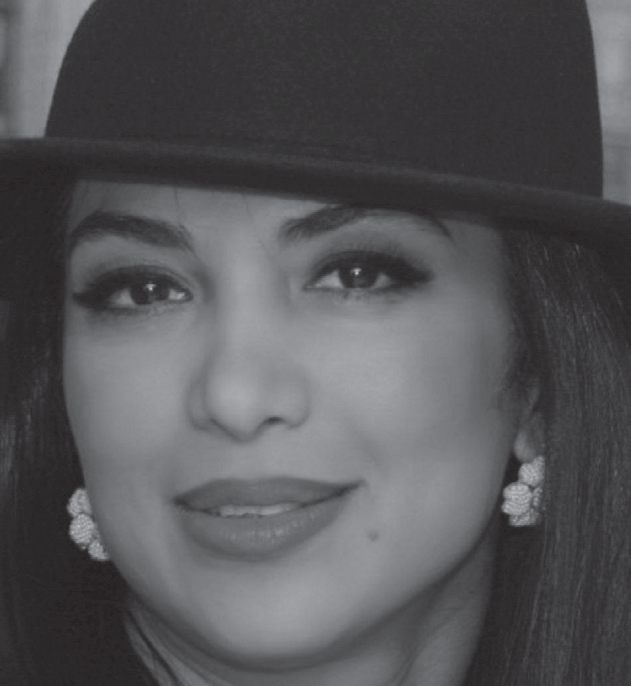
Baraneh Raiesi, born in 1978, has been working as an artist since 1998. She studied theoretical economics and interior designe. Baraneh started teaching arts, fi rst by learning how to design and then moved on to teaching academic painting, after a few years she became interested in sculpting and after passing a few different courses, she offi cially started her activity.
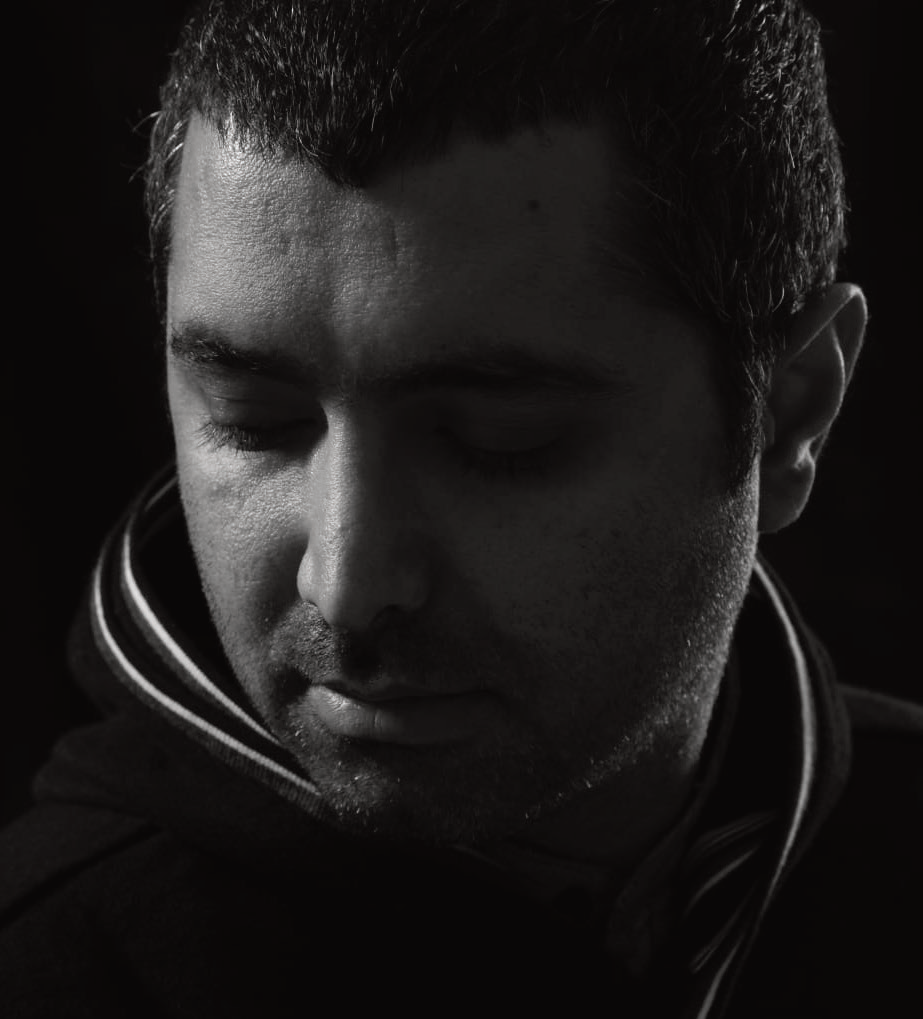
Reza Onsori, born in 1976 in Tehran, studied Art at Mahe Mehr Institute. He held multiple exhibitions; 3 of which he held, using the help of Golestan Gallery. He also worked with Etemad Gallery and multiple Galleries outside of Iran. He also held exhibitions for his students’ works and was their curator.
R: Arts in Iran has its own strengths and defi ciencies; as for the pros, due to the controversial situation that exists in this geographical region, including the political, geographical, environmental, weather and war crises and etc., artists can refl ect the issues on their work. As you know, in auctions and regional art tours, Iranian art always shines brightly. We can see, the crises which occurred in Europe during WWII had a strong impact on the works of European artists and this resulted in the creation of phenomenal work.
R: One of the most effective things that can be done is for the kids’ art institutes to become more popular in the society. Their role is very crucial. Children can be taken to the museums and become acquainted with Contemporary Arts. Children are very creative and if their creativity gets cherished, we can have a more dynamic society. Not everyone will become an artist for sure, but what is important is to fi nd solutions for challenges using art and creativity in order to boost your problem-solving skills. People have been paying a lot more attention to arts as a result of the art auctions that have been held in Iran for the past few decades, especially Tehran’s Art Auction. People’s perception of artists has improved since artists in the current era are not like the ones from the modern era or even before; They do not have odd personalities or strange looks. Nowadays, the number of galleries in the cities has increased and people have realized that they can go to galleries and they do not necessarily need to be invited.
B: The input people receive is very important, since it makes them more familiar with arts, for example, people should know that the galleries are for the public and it’s for them to visit. They don’t need to purchase anything but they can be familiarized with art, even if it’s just for a day.
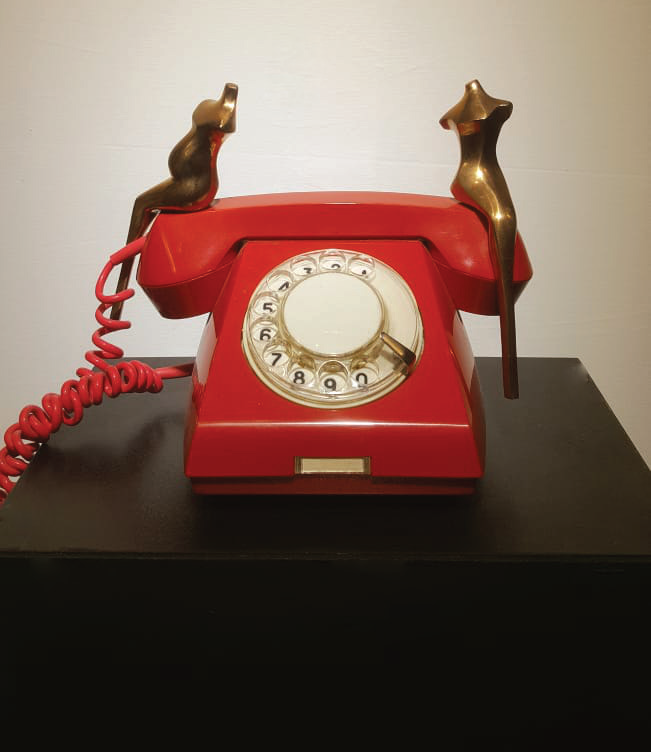
They can visit galleries with their families, look at the works close up, and see the differences between styles and ideas. By putting all these qualities together, they can appreciate them. I think spreading knowledge about art has been successful in recent years and people are getting to know more about art, and auctions have helped them to get to know many artists. Also, I believe each country should put more effort into making people more familiar with art and artists. Exchanging artworks between countries and displaying them in museums on a seasonal basis increases people’s awareness of art and artists.
R: In my opinion, purchasing artworks for the purpose of investment can be an appropriate option because the person who buys the work can visually enjoy it. Purchasing artworks can not only help the artist fi nancially, but also help the culture of that society. It can be a great investment especially now that the difference between Rial and other currencies is noticeable.
It is also a good opportunity for investors and foreigners; Better works of art can be purchased by them for better prices.
B: This has happened several times, except for our works that have been displayed in the Museum of Contemporary Art, and fortunately, many contemporary artists have had exhibitions in Iran. But if it happens more often, more people will be knowledgeable of today’s art.
R: Foreigners are more interested in abstract artworks than Iranians. Some of my work was purchased by foreigners for their galleries, or even a collector who used to work with foreign countries purchased a couple of my works. These works were sent to Monaco. Also in 2006, 40 pieces of my works were sent to Dubai by a decorator.
R: I have been teaching adults for 22 years, but the idea of teaching kids was formed 10 years ago; when I started to work with my wife (she’s a painter and a sculptor and she has completed the courses of specialized training for children), we started training the children of the people I used to teach. My wife and I formed a very good team and we kept going forward. We explain the history of art to these kids, using visuals such as images and videos, in order to inspire them. Basically, we teach Contemporary Arts to them in a way that is appropriate for their age. We take them to different exhibitions almost every year. It helps them to fi nd their style and path and by the age of 10 they will be able to have a noticeable collection of their own art. We get thrilled to see their progress.
B: I have to say that painting has been a part of me ever since I was a child. My mom went over to the calligraphers’ association to enroll me in their classes and I remember her having this very serious conversation with me that I shouldn’t be taught directly at my age (I was 8 or 9 years old back then) and there shouldn’t be any set patterns and I was just drawing freely. Of course, teaching methods have changed.
When I became an adult and passed some courses, I realized that children were my favorites because their pristine thoughts and minds were fascinating to me. I thought about teaching children in the same way that I was taught as a child. I like the fact that this creative method can create a kind of intellectual development for children, help them to depict whatever is in their imagination, and to nurture those beautiful imaginations that they have as kids.
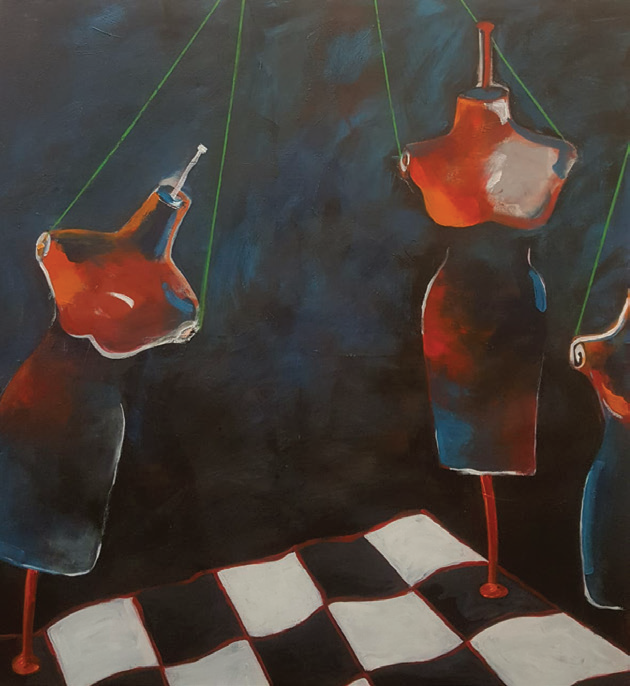
R: Announcements about my activities are made using social media, especially Instagram on which I share my daily activities including workshops and I will announce any upcoming exhibitions using the mentioned platform. Our Instagram page dedicated to teaching is called “Creativity Arthouse” and my own personal page dedicated to my work is underneath the name: “Reza Onsori”
B: I have had the page “Baraneh Atelier” educational Instagram page for years, and many people got to know us, our workspace, and our teaching style through this page. The page for my artistic work is called “Baraneh Raiesi” which has had an impact on the public’s familiarity with our work.
R: I’m inspired by my surroundings and my own life experiences. We live in a world where there are a lot of contradictions and I illustrate them in my work. I believe it is really important for artists to keep themselves up-todate and as for myself, I have always been trying to learn more.
B: My paintings and sculptures are unique fi gures and since the issues of women have always been my muse, I’ve addressed those issues in my paintings and sculptures. I start by drawing different fi gures, designing, and then executing them. I wanted to create something unique but infl uential. I asked myself what was the most important feature for me? When I thought about the answer, the fi rst things that popped up in my mind, were my hands and my thoughts; Because I would have never been able to do anything without them; I couldn’t paint or sculpt.
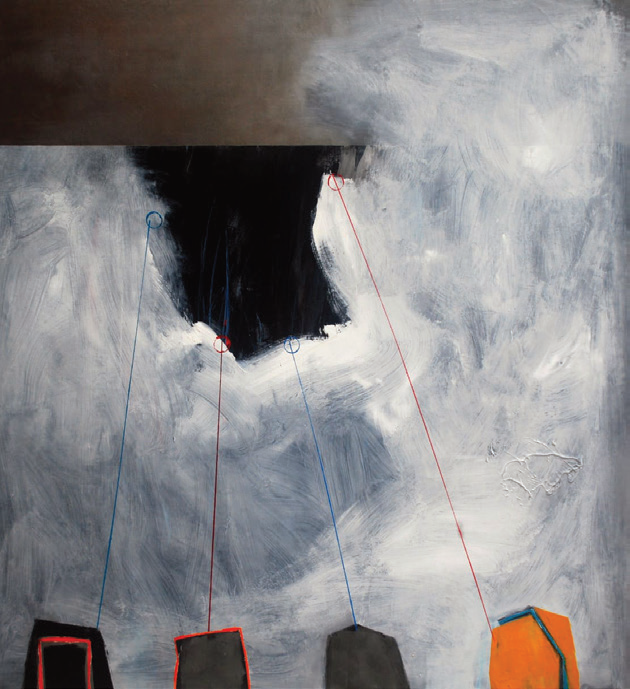
I decided to work on people who didn’t have these two traits. I thought about the future of these people and women. That’s how these fi gures were born and my mannequins came into existence. Regarding my activity with galleries, I have to mention that I am an artist at Golestan Gallery and I also held my own exhibition there.
I have worked with different galleries, such as Shirin Gallery, Hoor Gallery, and Golestan Gallery for 100 works of 100 artists and also the Imam Ali Museum. Most of my works were sold to doctors and I think that the fi gurativeness of my works is the reason for it.
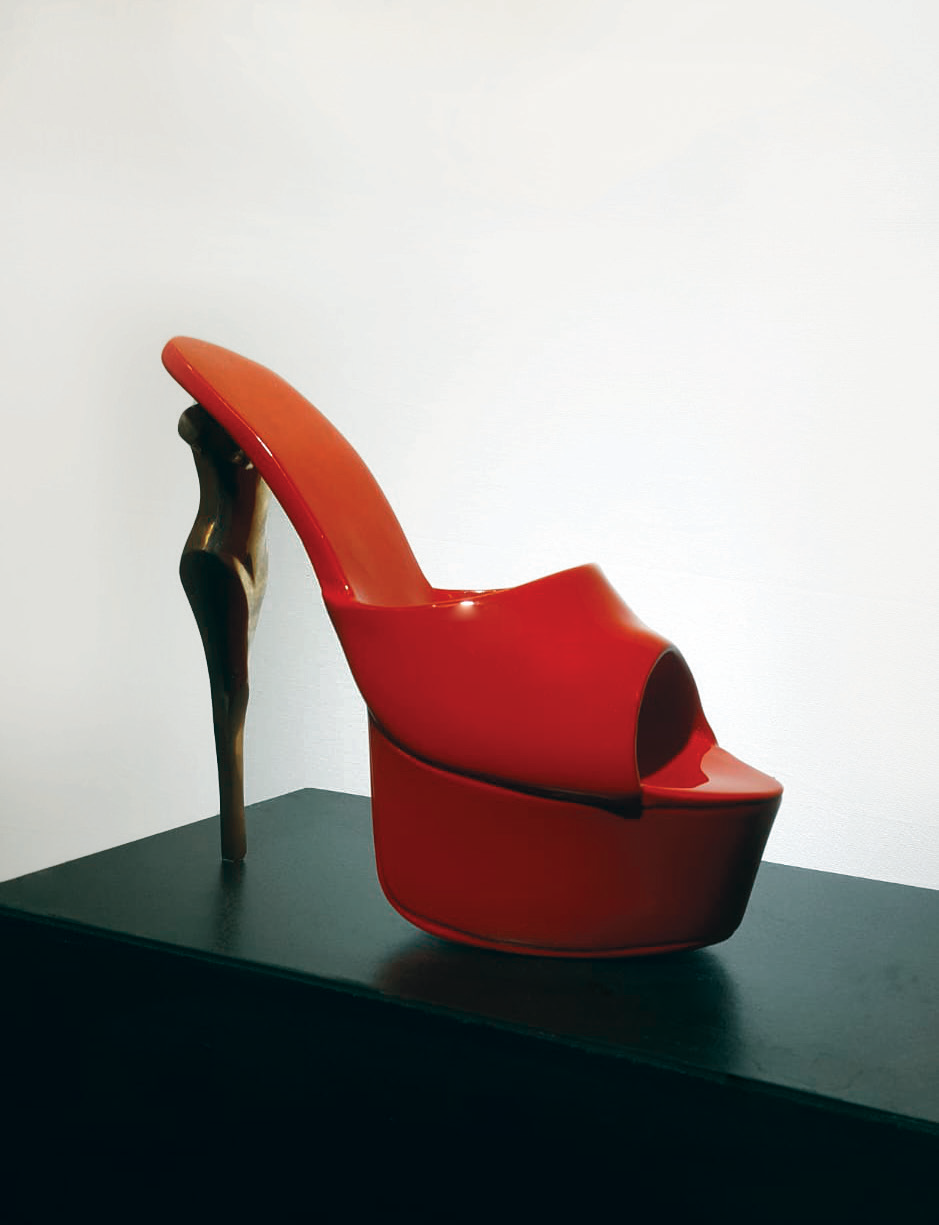
Opening Hours:
24/7
Phone: +90 531 640 4133
Email: info@trendzmena.com
Address: TRADEX INTERNATIONAL CONSULTING DANIŞMANLIK
itH. iHr. ve TiC. LTD. ŞTi.
Tomtom Mah. istiklal Cad. Beyoğlu iş Merkezi No.187 iç Kapr No: 4 Beyoğlu/iSTANBUL Beyoğlu V.D. 8591125255